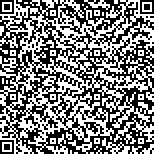下载中心
优秀审稿专家
优秀论文
相关链接
摘要

北京1号小卫星在轨运行一年多成功接收了覆盖中国各个行政区域的多光谱影像数据,为全国数字镶嵌图的研究提供了丰富的数据资料.针对北京1号小卫星特点进行关键技术和方法研究,形成了北京1号小卫星多光谱影像全国范围数据获取任务测控优化模式,解决了北京1号小卫星多光谱数据预处理中去条带、波段自动配准、MTF复原处理等关键技术,系统地、全面地阐述了全国镶嵌图制作的技术流程和方法.
Beijing-1small satellitewas launched inOctober2005. It includes two sensors,32m three bandsmultispectral(green,red and near-infrared)and4m panchromatic. Its revisiting period is very shor,twhichwas planned about3—5days depending on latitude at32m resolution. Another important advantage of this satellite is the large area collection capability of32m multispectral image,600km width imaging swath andmore than4000km stripe. These allow us to efficiently collect a large amountof imagery data, covering every region of theworld. Due to the advantages of32m multispectral image, it is obviously suitable formapping,especially for large area, such as the whole country ofChina. So Beijing-1small satellite will challenge the predominant role of satellite image data, such asTM and SPOT inChinese large-areamappingwork.Beijing-1small satellite ground station is the firstone inChina that integrates satellite supervising and controlling, task planning,data acquisition, data preprocessing andmosaic,etc.Because of the incorporateworkingmode, the image data ofBeijing-1small satellitewas obtained and processed. By the date ofNov.20th2006, the obtained image data hasmore than1000orbits, which covers thewhole country ofChina, and about20times for some area. Based on the abundant imagedata, the study ofChina sdigital mosaicmap ofBeijing-1small satellitewas promoted.This paper introduces themethodsof image enhancemen,t geometric correction, imagemosaic,and coloradjustmen,t which led to a successfulChina s digitalmosaicmap based onmultispectral images ofBeijing-1small satellite. As to image preprocessing,destriping, band registration and MTF restoration was applied. Moreover, in order to improve the quality and efficiency,data preprocessing and geometric correctionwas done on every orbi.During the coloradjustmen,t the image datawas divided intomany rectangle cellswith the same area, with overlapping area between any joined cells. In practice, the data cellwas17125pixel*17700pixe,l about870MB,with1000pixeloverlapping between any joined cells. There are53cells covering the land ofChina. Due to same small cells, itwas obviously to decrease the costofhardware fordata processing, to improve the effectofcoloradjustmen.According to the abovementioned approach,itwill take less than half a year to obtain the Beijing-1small satellite image data covering thewhole country of China, and then only twomonths are needed to finish thewholemosaicwork.As the resultofstudy, byDec.2006, two piecesofdigitalmosaic miage of Chinahasbeen achieved. Thedigitalmosaicmap isbeing andwillbe used inmany fields, such as forestmonitoring, land use and land coverchange study, resource research, digitalmapping and so on. Moreover, the experience to achieve the32m mosaic miagemap is useful forother smi ilarprojects.

